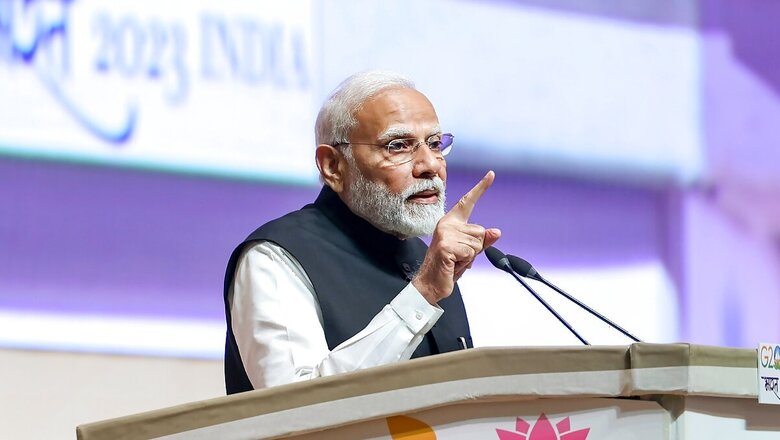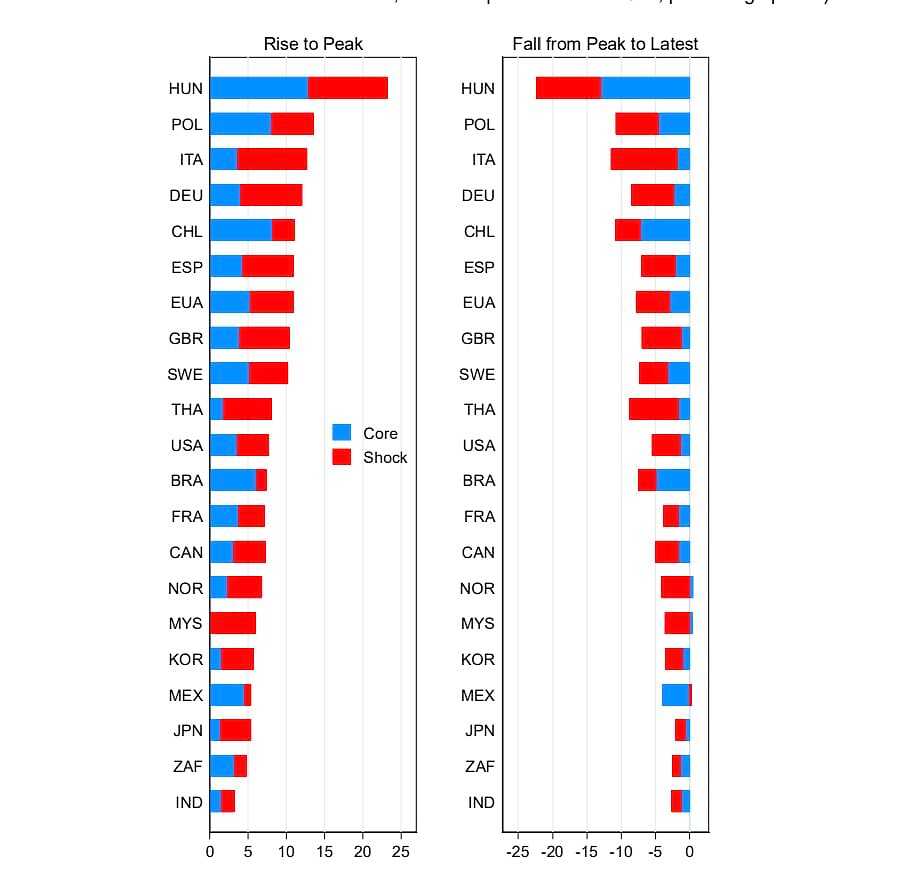
views
Narendra Modi-led India fared better than all other major economies in post-Covid recovery with the lowest inflation rate, a study for the period between December 2020 and March 2024 has shown, helping the country’s global image as well as the BJP in ongoing general elections.
The paper, titled ‘Understanding the Rise and Fall of Inflation Since 2020’ and released this month, has found that out of 21 world economies, India fared the best when it came to taming inflation. In the long list that included Joe Biden’s United States, which will go to polls later this year, Giorgia Melloni’s Italy and Justin Trudeau’s Canada, none came close to India when it came to tackling inflation.

Hungary reported the highest increase in inflation while Poland and Italy reported the second and third highest increase. India reported the lowest increase while the United States’ inflation increase was twice that of India’s. In fact, Brazil, France, Norway, South Korea, Mexico, and Japan — all had higher increases in inflation in comparison to India.
Gopal Krishna Agarwal, who heads the BJP’s economic wing, spoke to News18 about the key differentiator between India’s response to the pandemic disruption and that of the others.
“India’s inflation remained within the target set by the RBI. This is because of persistent efforts of the Narendra Modi government, where in spite of suggestions to do so, it refused to resort to excess liquidity into the system. Instead, India went ahead with direct food distribution to crores while coming out with a massive and elaborate post-Covid recovery package of Rs 6.28 lakh crore stimulus addressing every sector. This is now understood by the world and our PM’s efforts are now being praised across the world.”
So where did countries like the US, Canada, and Italy fail? Agarwal reasons that first they infused excess liquidity into the system and later, while trying to suck it up from the market, created a recession instead. Liquidity is a measure of how easily an asset or security can be converted into cash without affecting its market price. In layman terms, it refers to the circulation of cash in hand. “Today, they are facing recession after high inflation. We have neither,” says Agarwal.
FOCUS ON FOOD INFLATION
While India has been able to tame inflation and also keep recession away unlike many Western economies, one of the worrying trends in India is food inflation. The current retail inflation eased to 4.83% in April 2024 and remains in the Reserve Bank of India (RBI) tolerance band, set at 2 to 6%. But even that is primarily moved by food inflation in India, says the newly released paper.
India is a unique case in this regard as inflation of most economies like Hungary, Italy, Spain, Sweden, the UK and the US is driven by energy inflation. But in India’s case, it is the food inflation that is driving the prices up.
“We find that three factors played a dominant role across the 21 countries we study: energy price inflation, food price inflation, and shipping cost inflation, as measured by the Harper charter rate. Taken together, these three variables account for between 21% and 94% of the variation in headline inflation shocks, depending on the country, with energy price inflation by far the dominant factor,” says the paper.
While high food prices have eased in most economies, high energy prices have remained a concern. In India’s case, it seems to be the opposite. India’s energy price inflation is at 0.002 while food inflation is at 0.923, quotes the paper.
It means higher prices for regular food items, which effectively affects the entire population. While most predictions suggest a return of the Narendra Modi government with a bigger mandate for the third term, eyes will be on his first 100 days when he may address this concern.
Explore in-depth coverage of Lok Sabha Election 2024 Voter Turnout, Upcoming Phase, Results Date, Exit Poll And Much More At News18 Website




















Comments
0 comment